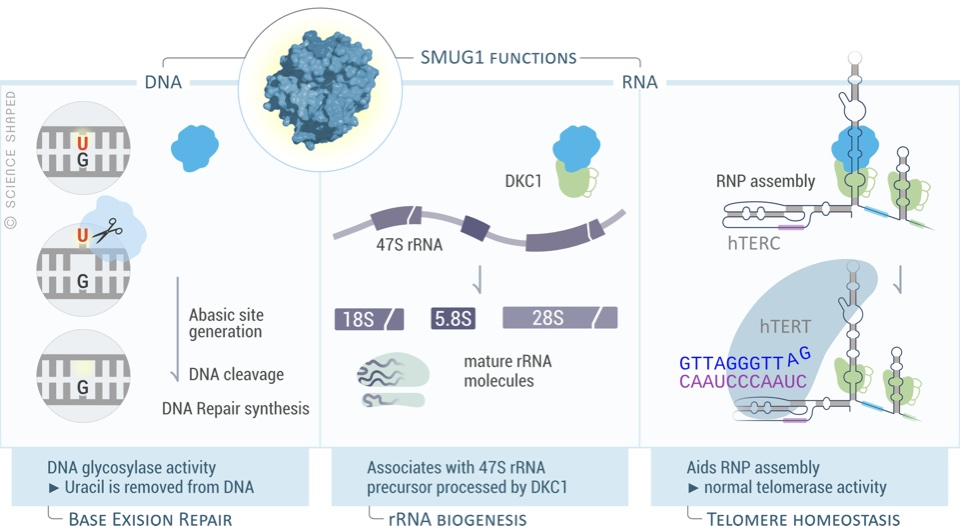SMUG 1 at the intersection of RNA and DNA biology
Chemically modified nucleic acid bases are sources of genomic instability and mutations but may also regulate gene expression as epigenetic or epitranscriptomic modifications.
Depending on the cellular context, they can have vastly diverse impacts on cells, from mutagenesis or cytotoxicity to changing cell fate by regulating chromatin organisation and gene expression. The specificity and selectivity of the recognition of these modified bases relies on DNA glycosylases, which acts as DNA damage, or more correctly, as modified bases sensors for the base excision repair (BER) pathway.
We study this duality with particular attention to the SMUG1-DNA glycosylase, which is the main enzyme recognizing 5-hydroxymethyluracil, in RNA and DNA.

SMUG1 functions in Base Excision repair but also in processing, maturation and quality control of several types of RNA species. DOI: 10.3390/ijms241210307
